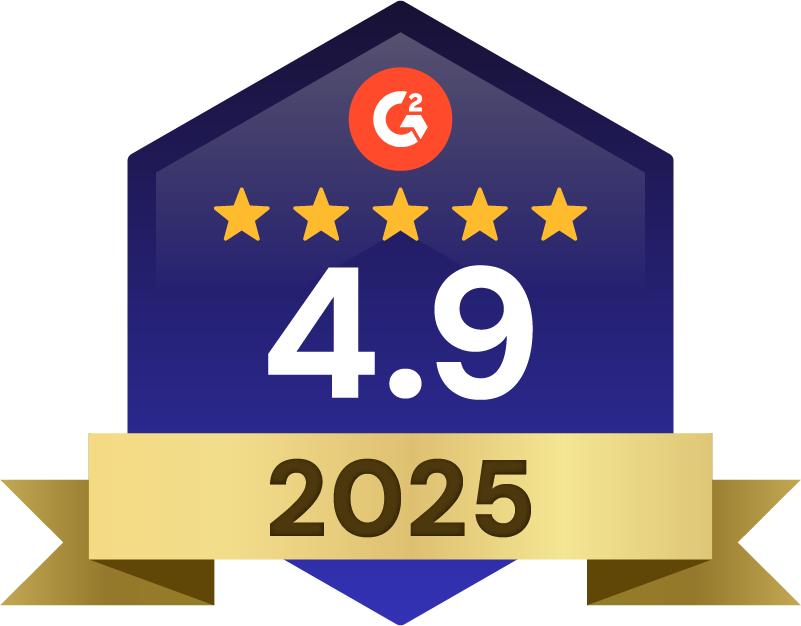Learn how to write more compelling real estate listing descriptions and avoid some of the most common (and destructive) listing description cliches.
Branding & Design Lead Generation
If you’ve been a real estate agent for a while, you probably have a love-hate relationship with listing descriptions. If you have listed many similar homes over the years, it can be easy to fall into a rut, simply go through the motions, and fall back into predictable property description formulas.
However, listing descriptions are a powerful tool in attracting more views and real-life visits from home buyers. Homebuyers can easily scroll through hundreds of real estate listings on the web in a matter of minutes. You only have a fleeting movement to catch their attention and motivate them to research deeper.
In this article, we’ll go over several strategies that can help you write better, more eye-catching, and compelling real estate property listing descriptions every time.
1. Find Inspiration
Research is the first step of every writing process. Jump online and get familiar with the format and language in a stand-out listing. Understanding your target audience is crucial when seeking inspiration. Think about what they value most in a home and what features are likely to catch their attention. Tailor your research to listings that resonate with that specific demographic.
If your listing is a long string of never-ending adjectives and poorly lit photos, buyers will become uninterested – without question.
2. Understand Your Target Audience
Writing listing descriptions that convert starts with knowing exactly who you’re trying to reach. Crafting a compelling home description is not about throwing in every positive feature—it’s about highlighting the ones that matter most to the right buyer.
Identify Your Buyer Persona
A buyer persona is a semi-fictional profile of your ideal buyer. It’s a way to understand who they are, what they care about, and what motivates them. For example:
- First-time buyers: These buyers may be looking for affordability, functional spaces, and proximity to work or schools.
- Luxury buyers: They’re more likely to prioritize premium finishes, unique architectural details, and privacy.
- Investors: They’re all about ROI—easy maintenance, rental potential, and location advantages matter most.
If you’re selling a modern condo downtown, your likely buyer isn’t a family with three kids—it’s a young professional looking for convenience and style.
Tailor Your Descriptions Strategically
Once you know your audience, craft the listing to speak to their goals and lifestyle. Use real estate descriptive words that align with their priorities. For example:
- For families: “Located in a top-rated school district with a spacious backyard for kids to play.”
- For young professionals: “Open-concept layout with a sleek kitchen and walkable access to restaurants and nightlife.”
- For retirees: “Single-story home with a low-maintenance yard and a cozy sunroom perfect for morning coffee.”
Avoid generic phrases like “perfect for anyone.” Instead, make your description feel like it’s written for someone specific.
Highlight Lifestyle Over Features
Don’t just list features—connect them to a lifestyle. A “large kitchen” becomes “a chef’s kitchen designed for hosting dinner parties.” A “finished basement” becomes “a versatile space ready for movie nights or your dream home gym.”
By focusing on your target audience, you’re not just describing a property—you’re showing buyers how it fits into their life. That’s the difference between a listing that gets overlooked and one that gets calls.

3. Write an Engaging Headline and Opening Statement
If your property listing site lets you use a headline and opening statement other than the address of the property, make sure you take full advantage of it.
It’s crucial to consider each listing individually and put the same amount of effort into every description to ensure you drive traffic to all of your listings.
The Headline
The property’s headline can be used to immediately grab your reader’s attention, and lead them to spend more time looking over your listing.
A simple formula for a standout headline is appeal to emotion (happiness, sadness, curiosity), personal interest (greed), or stand out from the rest (contrast):
- Be concise: The most memorable headlines are short and concise. Try to keep yours between five to seven words.
- Use emotional language: Use powerful, descriptive words that trigger an emotional response. You can use tools such as a headline analyzer, AI-writing tools, and a power word list to pick the right adjectives for your listing. Focus on some aspects of the property that would help your target audience live a specific kind of lifestyle they are looking for.
- Edit your ideas: Never publish your first draft. Even if it looks good at first glance. A good rule of thumb is to come up with 5 initial ideas and then edit each one 4-5 times. You’ll quickly notice that your headline ideas improve as you refine each initial idea, and you’ll have a stronger headline.
- Put your ideas aside for a moment and come back to them later: It’s easy to get tunnel vision when you’re focused on a single task for a while. Leave your headline ideas alone for an hour or two, and come back with fresh eyes. When you come back, you’ll be able to spot any issues with them, and further improve on them
- Get a second opinion: Ask a friend or coworker to give you their opinion on the headline ideas, and ask them for constructive criticism.
- Always Appeal to the Best Features of the property: Your headline should always reference at least one of the major, important features of the property. What is it that comes to mind when you think about the house?
- Don’t shorten terms that buyers may search for: As tempting as it is to write FSBO instead of for-sale-by-owner, remember who is searching for your listings. Buyers are unlikely to understand real estate acronyms and search for listing using simple terms and phrasing.
The Opening Statement
Opening statements should tell readers exactly what they are looking at while evoking emotion and creating enough interest to encourage them to keep reading.
Hook readers with your opening sentence by spotlighting your home’s number one standout feature and creating a visual experience through your words. Use storytelling elements to help buyers imagine themselves living in the space.
For example: “Imagine waking up in your cozy redwood timber cabin, tucked away in the gorgeous hills of the Sierra Valley on a serene and private 3⁄4-acre lot.”
4. Use Descriptive and Powerful Language
Your real estate listing description is more than just a rundown of features—it’s your chance to make a lasting impression and create a connection with buyers. The right real estate descriptive words can turn a basic home description into a powerful tool that captures attention and drives action.
Choose Adjectives That Pop
Skip the overused “nice” and “spacious.” Instead, aim for adjectives that add depth and clarity to the home’s appeal. Think luxurious, sunlit, modern, charming, or impeccably maintained. These words don’t just describe the property—they elevate it.
For example:
- Instead of: “Nice kitchen”
- Try: “A chef’s kitchen with gleaming quartz countertops and state-of-the-art stainless steel appliances.”
Or:
- Instead of: “Big yard”
- Try: “An expansive backyard retreat, perfect for summer barbecues or quiet evenings under the stars.”
Strategic use of language can help buyers imagine themselves living in the space, which goes a long way in motivating offers.
Engage the Senses
Your listing description should go beyond what buyers can already see in the photos. Use sensory details to create an emotional connection.
- Sight: “Floor-to-ceiling windows flood the living room with soft natural light, highlighting the elegant wood flooring.”
- Sound: “Relax to the soothing sounds of a nearby creek in your private backyard oasis.”
- Touch: “Step onto the heated tile floors in the spa-inspired bathroom after a refreshing shower.”
These details bring the property to life and make it feel more tangible.
Focus on Lifestyle
Don’t stop at features—connect them to the buyer’s potential lifestyle. A home isn’t just a collection of rooms; it’s a place for experiences.
- Feature: Open floor plan
- Description: “Host unforgettable gatherings in the open-concept living and dining area, where guests can easily mingle from room to room.”
- Feature: Private balcony
- Description: “Sip your morning coffee while taking in panoramic views from your secluded balcony escape.”
Keep It Honest
Buyers can spot exaggerations from a mile away. If the space is compact, call it “cozy” and highlight its functionality. If the property needs work, describe it as “an opportunity to customize to your taste.” Transparency builds trust and avoids potential disappointments during showings.
If you use deceptive language, such as calling a 900 square foot home “roomy and spacious”, or a home with mold or water damage “in turn-key condition”, you’re only damaging your credibility and reputation.

5. Take Professional Photos of the Property
Our world is image-obsessed and your clients will expect nothing less than the best, most flattering photos of your real estate listing. If your pictures are poorly lit, blurry, or ambiguous, viewers will quickly move on. Take photos of all angles of the home, especially the selling points that you describe in the listing.
A professional photographer is ideal, however, modern smartphones can usually get the job done with a few takes and some great natural light. Before you take pictures, let the homeowners know in advance so that they can get the space cleaned and prepared. You may also want to ask the current owners what they think are the best features of the home so that you can make sure to capture them in your photos. .
Paired with a well crafted narrative, it will be easy for buyers to imagine what it would be like to live in that property.
6. Showcase Unique Property Features
In today’s competitive real estate market, a generic listing description won’t cut it. Buyers are looking for specific features that stand out and align with their lifestyle. Here’s how to ensure your property grabs attention by spotlighting the unique details that truly sell homes.
Get Specific
Skip vague statements and dive into the details. Instead of “great backyard,” try: “A landscaped backyard with a built-in stone fire pit and a pergola-covered patio, perfect for hosting weekend gatherings.” Highlight design elements, materials, or upgrades that make the space exceptional.
For example:
- Generic: “Updated bathroom”
- Specific: “A spa-inspired primary bathroom featuring a frameless glass shower, dual vanities, and a freestanding soaking tub.”
Buyers want to picture not just a home, but the life they could live there.
Focus on Character
Does the property have unique architectural details, historical charm, or custom finishes? These are the features that tell a story and make your listing memorable. Think exposed beams, original hardwood floors, or hand-crafted built-ins.
Example: “This mid-century modern gem showcases floor-to-ceiling windows, flooding the living space with natural light and offering panoramic views of the surrounding greenery.”
Highlight Luxury and Brand Names
If the property has premium features, call them out. Luxury buyers, especially, are drawn to brand-name appliances, high-end finishes, and smart home technology.
Example: “The chef’s kitchen boasts Sub-Zero refrigeration, a Viking gas range, and a custom-built pantry for seamless organization.”
Sell the Lifestyle
Don’t just list features—connect them to how a buyer could live. A pool becomes “a private oasis for summer entertaining.” A home office becomes “a quiet, light-filled space for productivity.”
Example: “Enjoy summer evenings under the stars in your fully equipped outdoor kitchen, complete with a built-in grill, mini fridge, and ambient lighting.”
Showcase Amenities
Unique amenities are the wow-factor that makes a buyer remember your listing. Think wine cellars, home theaters, infinity pools, or EV charging stations.
Example: “This home’s highlight? A climate-controlled wine cellar with capacity for 500 bottles, ideal for collectors.”
By focusing on details, character, and lifestyle, your listing becomes more than a home description—it’s an invitation to imagine a better way of living.
7. Avoid These Common Mistakes in Your Real Estate Listing Descriptions
If your real estate listing descriptions aren’t converting, you may be falling into a few common traps. Here’s what you need to know to write home descriptions that stand out and attract serious buyers while staying compliant and professional.
Overused Jargon is Killing Your Listings

Words like “cozy,” “charming,” and “fixer-upper” are everywhere—and buyers are over it. These generic terms fail to create an emotional connection or paint a clear picture of the property. Even worse, they can send the wrong message. “Cozy” might read as “small,” and “fixer-upper” screams “expensive repairs ahead.”
Instead: Use targeted, descriptive language that highlights the real value of the home. For example, swap “cozy” for “a thoughtfully designed living area with natural light pouring in through oversized windows.”
Red Flag Words Turn Buyers Away
Phrases like “needs TLC” or “great bones” may sound harmless, but they raise red flags for buyers who don’t want a project. These words can deter even the most interested prospects.
Instead: Reframe the opportunity with honesty and optimism: “An ideal canvas for your personal touch, featuring a solid foundation and spacious layout.”
Legal Compliance Isn’t Optional

Fair Housing lawsare non-negotiable, and violating them—intentionally or not—can result in serious consequences. Phrases like “family-friendly” or “perfect for young professionals” may sound innocent but can unintentionally exclude certain groups.
Instead: Focus on the property’s features, not the buyer. Highlight proximity to parks, schools, or amenities without making assumptions about who the buyer might be.
Poor SEO is Hiding Your Listings
Your beautifully written listing won’t matter if no one can find it. Neglecting SEO—like skipping keywords such as “real estate listing description” or “home description”—keeps your property buried in search results.
Fix it: Naturally integrate keywords buyers are searching for. For example, “This 3-bedroom home in [Neighborhood] combines modern upgrades with timeless charm, perfect for anyone looking for a versatile living space.”
Stay Authentic and Professional
No all-caps, no excessive exclamation points, and definitely no typos. Buyers notice these details, and they can undermine your credibility fast.
Write with intention, stay compliant, and craft descriptions that sell the dream—not just the house.
8. Include a Compelling Call To Action
The last stage of most real estate a compelling call-to-action. Pay attention to which listings perform the best and what sets them apart from listings that didn’t get tons of hits.
You could say for example:
“This house is only available to the first buyer who acts NOW. Call xxx-xxx-xxxx.”
“This home won’t be on the market for long. Schedule a private tour today!”
The Bottom Line on Real Estate Listing Descriptions
If your property descriptions aren’t converting, it’s time to rethink your approach. Crafting a standout real estate listing description is about more than listing features—it’s about telling a story that resonates with your ideal buyer. Here’s how to make your descriptions work harder for you.
Start by identifying your audience. Is this home perfect for young professionals? Families? Downsizers? Tailor your language to reflect their needs and lifestyle. For example, instead of saying, “large living room,” try, “a sunlit living space designed for both relaxation and entertaining.” This shift makes your home description feel personal and aspirational.
Focus on the property’s unique listing characteristics. Buyers are scrolling through hundreds of listings, so make yours stand out. If the home has a chef-worthy kitchen, don’t just list the appliances—paint a picture: “Cook like a pro with top-of-the-line Viking and Sub-Zero appliances, surrounded by sleek quartz countertops.”
Skip the clichés! Words like “cozy” or “charming” are overused and vague. Instead, opt for real estate descriptive words that evoke emotion and create a vivid image. Think “expansive,” “meticulously maintained,” or “architecturally stunning.” Bonus points if you tie these features to a lifestyle—like “an outdoor patio perfect for hosting unforgettable summer gatherings.”
Lastly, every great listing ends with a strong call to action. Don’t just hope buyers will reach out—encourage them to act now. “This gem won’t last long—schedule a private showing today!”
The bottom line? Great listing descriptions are clear, compelling, and buyer-focused. Apply these strategies, and watch as your properties attract more attention, more showings, and better offers. Ready to make your next listing shine? Let’s get to work.








